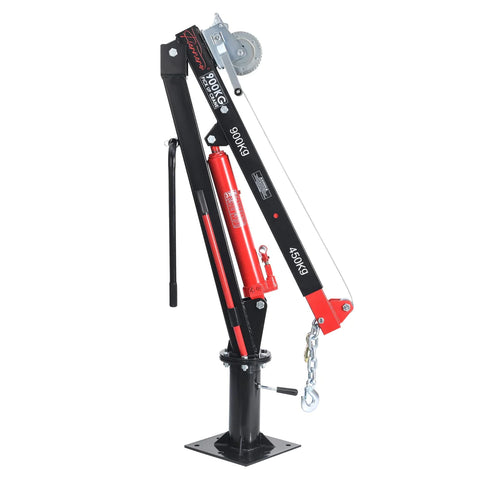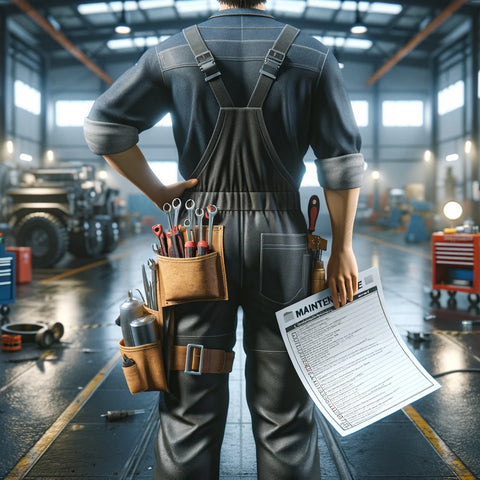Engine cranes, essential tools in the realm of automotive repair and engine maintenance, offer the precision and power needed to lift and maneuver heavy engines out of vehicles. This guide serves as an exhaustive resource, covering various engine crane types, how to select the right one, operational guidelines, maintenance advice, and crucial safety tips.
Types of Engine Cranes
Understanding the different engine cranes available is vital in choosing one that suits your needs. Common types include:

- Hydraulic Engine Cranes: Known for their power and reliability, hydraulic cranes use a hydraulic pump and cylinder to lift engines. They are ideal for heavy-duty tasks.

- Electric Engine Cranes: These cranes use electric motors to lift the engine, offering ease of use and consistent power. Suitable for workshops with regular engine lifting needs.

- Foldable Engine Cranes: Designed for space efficiency, foldable cranes can be collapsed for storage, making them perfect for small garages and occasional use.
The choice between hydraulic and electric engine cranes ultimately depends on your specific needs, including the nature of your automotive projects, the frequency of use, and the conditions of your workspace. Hydraulic cranes offer rugged reliability and cost-effectiveness for a variety of lifting tasks, while electric cranes provide unmatched convenience and efficiency, especially in high-volume settings. By carefully considering these factors, you can select the type of engine crane that best enhances your workflow and ensures safe, efficient handling of engine lifts.
Selecting the Right Engine Crane
When choosing an engine crane, consider the following factors:
- Weight Capacity: Ensure the crane can handle the weight of the engines you typically work with.
- Height Range: The crane should reach high enough to clear the vehicle and low enough for precise placement.
- Mobility: Look for cranes with sturdy, easy-to-maneuver wheels if you'll be moving the crane frequently.
- Storage: If space is a concern, consider a foldable model or one with a compact footprint.
Choosing the right engine crane is a critical decision that impacts the efficiency and safety of your automotive projects. By carefully evaluating these factors, you can invest in an engine crane that will serve as a valuable asset in your workshop for years to come.
Operational Guidelines
Safely operating an engine crane requires understanding its mechanics and respecting its capabilities.
- Preparation: Inspect the crane before use, checking for hydraulic leaks, damaged components, or loose fittings.
- Lifting: Attach the crane securely to the engine using designated lift points. Ensure the load is balanced before lifting.
- Maneuvering: Move the crane and engine slowly, avoiding abrupt movements that could destabilize the load.
Adhering to operational guidelines ensures the safe and effective use of your engine crane. Familiarizing yourself with the proper setup, lifting, and maneuvering procedures can prevent accidents and damage, maximizing the lifespan of your crane. Remember, understanding the capabilities and limitations of your engine crane is key to leveraging its full potential.
Maintenance and Care

Regular maintenance ensures the longevity and safety of your engine crane.
- Hydraulic Fluid: Check and replace the hydraulic fluid as needed to maintain optimal performance.
- Moving Parts: Lubricate wheels, joints, and any moving parts regularly to ensure smooth operation.
- Inspection: Conduct routine inspections for wear and tear, especially before heavy lifting tasks.
Regular maintenance and care are essential to keeping your engine crane in top working condition. This proactive approach to maintenance ensures that your engine crane remains a dependable tool in your automotive repair arsenal.
An engine crane is an invaluable asset in automotive maintenance, significantly easing the process of engine removal and installation. By understanding the different types available, selecting the right crane for your needs, following operational guidelines, maintaining the equipment properly, and adhering to safety standards, you can ensure efficient and safe engine handling in your workspace.
For those looking to expand their knowledge on engine cranes or explore a selection of high-quality engine cranes tailored to a variety of needs, check out our curated engine crane listings. Your safety and efficiency in the workshop are our top priorities.

